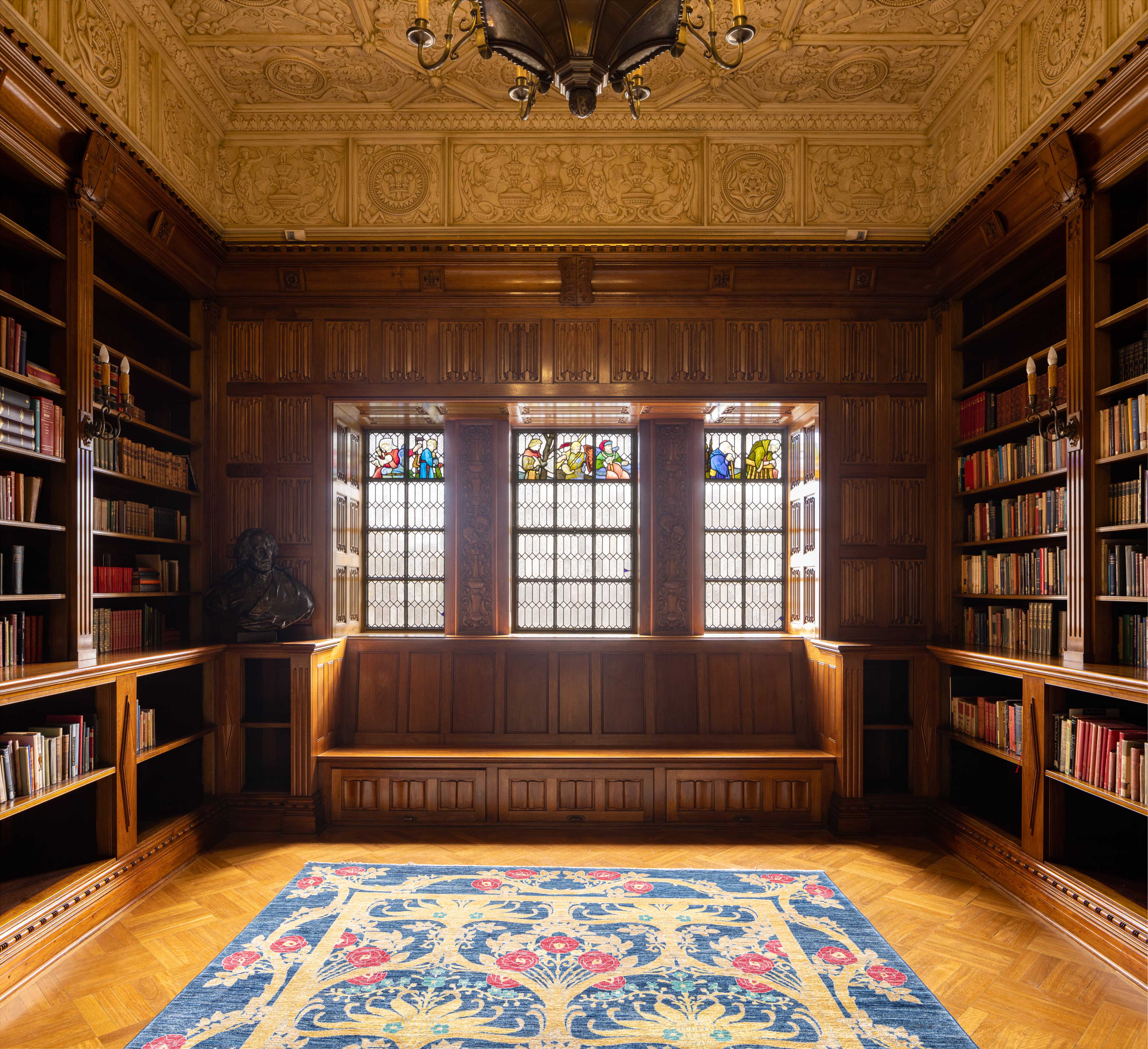The Shakespeare Room
A hidden corner of Tudor England in Australia ...
Celebrated playwright and poet William Shakespeare, born in Stratford-upon-Avon in 1564, wrote 38 plays and more than 150 poems — some of the most famous works in the English language.
As the 300th anniversary of Shakespeare’s death approached in April 1916, admirers around the world began to plan commemorative events. In NSW, the Shakespeare Society held a lavish ball and other activities, raising close on £500 ($1000) to establish a memorial library and commission a bust of the famous playwright. The outbreak of the First World War delayed work on the centenary project, and it wasn’t until 1926 that a memorial statue, featuring Shakespeare surrounded by characters from his plays, was unveiled. Originally located between the Garden Palace Grounds and the Mitchell Library, the statue was later moved to Shakespeare Place, opposite the Library, to make way for the Cahill Expressway. Finally in 1943, the Shakespeare Library opened on the ground floor of the Mitchell Building.

Woodwork
Woodcarver Charles Sherline demonstrated the finest traditions of his craft using Australian timbers, Tasmanian oak and blackwood, treated to replicate the warm honey-colour of English oak. Carved linen folds (first used by Flemish craftsmen to embellish linen chests) and the Tudor rose — royal emblem of Shakespeare’s time — are featured throughout the room. Shakespeare’s coat of arms can be seen outside the room, above the entrance doorway and the coat of arms of Queen Elizabeth I appears inside the room, above the doorway. Perhaps the best examples of the woodcarver’s craft are the two chip-carved and beaded pillars inside the entrance doors.
The stained glass windows adorning the room — depicting the seven ages of man, from As You Like It (Act II, Scene VII) — were crafted by Arthur Benfield.
Windows
A fine sequence of stained-glass windows depicts Shakespeare’s seven ages of man, from As You Like It, act II, scene VII. Arthur Benfield, the artist who designed the windows, was also responsible for many other magnificent windows, including in the Mitchell Reading Room and a number of Sydney churches.
Special Features
Sydney firm Art Plasto constructed the ceiling, a close copy of the Tudor ceiling in Cardinal Wolsey’s closet at Hampton Court Palace. It is made up of richly embellished squares and hexagons, centred with rosettes, Tudor roses and Prince of Wales feathers. Conventional Renaissance ornaments — Tudor badges, mermen, mermaids, dolphins and vases — support the principal motifs and also adorn the deep, well-proportioned frieze which runs above the woodwork. Moulded ribbing, the most characteristic design feature of Tudor ceilings, holds the individual plaster casts in place.
The splendid bronze chandelier was a gift to the Library from Sir William Dixson in memory of David Scott Mitchell.
In the corner of the room is a bust of Shakespeare. This is a 19th century replica of a terracotta bust by the important Huguenot sculptor Louis François Roubiliac (1702–62). The original sculpture is housed in the Garrick Club in London.
A wooden chair of Tudor design, with turned supports and a triangular seat frame, also sits in one corner of the room. Embedded in the top rail of this three-legged chair is a slip of mulberry wood stamped with the words ‘Shakespeares wood’, supposedly from a mulberry tree which Shakespeare planted in his garden at Stratford-upon-Avon.
A facsimile of the 1632 Second Folio, published in London in 1909, is on display open at As You Like It, act II, scene VII and a selection of works by and about Shakespeare line the walls of the Shakespeare Room.
The Library's Shakespeare Collection
The State Library holds a rich and diverse collection of over 5,000 works by or about Shakespeare, along with books about Shakespearean England and the history of theatre and performance collected over 150 years. The only known copy of Shakespeare’s First Folio in Australia was donated to the Library in 1885. The First Folio, the first collected edition of Shakespeare’s plays, was published in 1623, eight years after Shakespeare’s death. Examples of the Second, Third and Fourth Shakespeare Folios are also held in the collection.



